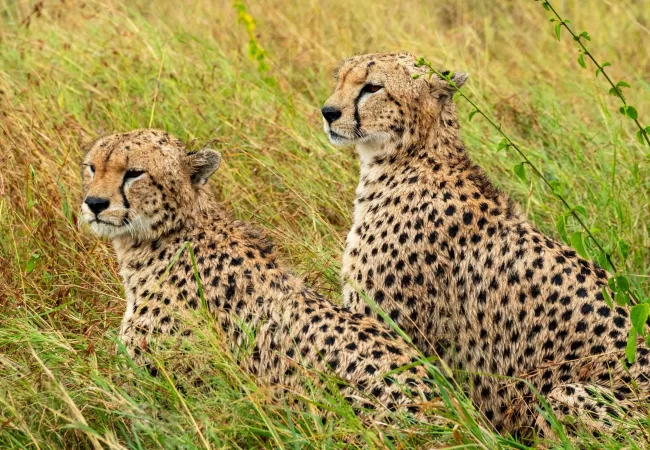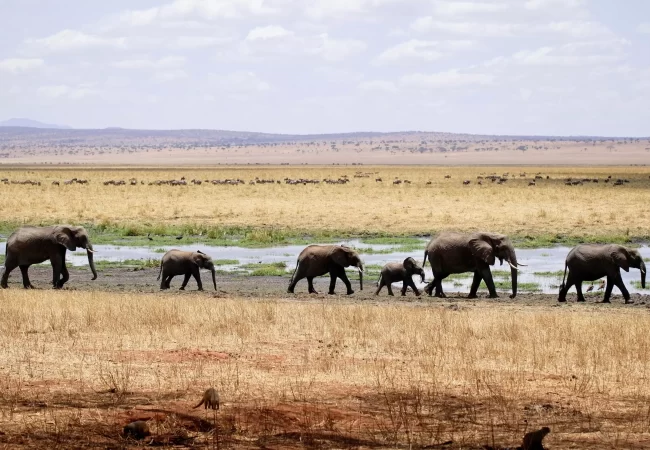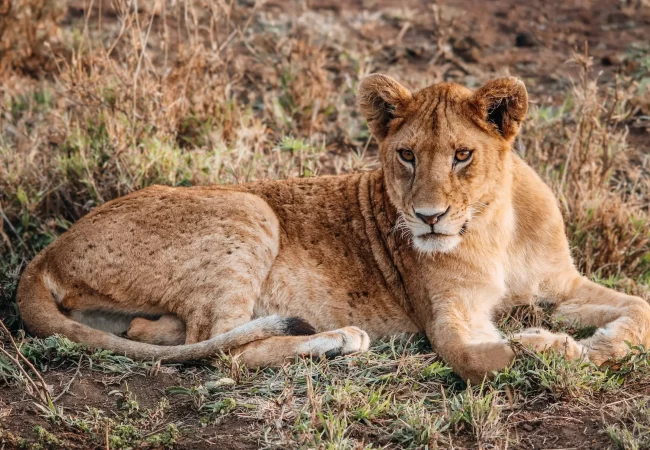Habitat
The Ngorongoro Conservation Area covers over 8,000 km², but its most famous feature, the Ngorongoro Crater, spans just 260 km². This compact size makes it a must-see destination in Tanzania. The crater, a caldera formed by a collapsed volcano, features steep walls rising 610 meters, creating a natural enclosure for a vast array of wildlife. Within this small area, you’ll find diverse habitats: montane forests on the rain-facing walls, grasslands on the drier western walls, expansive grasslands on the crater floor, acacia forests, the saltwater Lake Magadi, and Ngoitokitok Spring, which forms a swamp in the eastern part of the crater.
Wildlife
The Ngorongoro Crater boasts a dense concentration of wildlife, including the Big Five. Hippos, crocodiles, zebras, and a variety of antelope and plains game also thrive here. The critically endangered black rhino is regularly sighted, adding to the area’s appeal. It’s estimated that about 25,000 large animals inhabit this natural enclosure, making it possible to see many species in a short amount of time. The crater is also a paradise for bird watchers, with the salt lake attracting hundreds of pink flamingos and the skies above hosting various birds of prey.
Best Time to Visit
Wildlife in the crater is present year-round, making it an excellent game-viewing destination at any time. However, the area can become crowded during the peak tourist season, which lasts most of the year except for April and May when heavy rains can make some roads hazardous and impassable.
Formation of the Ngorongoro Crater
Designated as a UNESCO World Heritage Site, the Ngorongoro Crater was formed approximately 3 million years ago when a giant volcano erupted and collapsed inward. This created one of the most unique and life-rich safari destinations in Africa and the world. While planning a visit to Ngorongoro can be logistically challenging, our extensive experience in organizing such trips allows us to provide expert guidance. Contact us to discuss your options and ensure a memorable safari experience.




